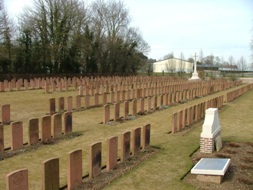War graves - rock types
Sir, I have been reading the November edition of Geoscientist and was interested by the article on the headstones of the Commonwealth War Graves Commission by Nina Morgan (Geoscientist 24.10 p 25).
Over the years I have spent a lot of time looking at CWGC cemeteries all over the world and it is as Nina Morgan points out Portland Stone headstones are usually used to mark the final resting place of the war dead of the Commonwealth. It is also true that there have been attempts to move away from this stone on occasion, and there are examples of several different types of stone in use.
In Scotland, as Morgan states, granite has been used in some places and some of these are in isolated communities in the highlands and islands. In Wales there are examples of slate headstones, for example in the main cemetery in Abergavenny. However, it is perhaps unusual to find battlefield cemeteries where significant departure from the Portland Stone headstones occurs.
 The Marinsart British Cemetery (picture) has 333 burials from the fighting on the Somme in both 1916 and 1918. All the headstones are either Corsehill or Lochabriggs red sandstone, marking a contrast to the other cemeteries of the area. There does not seem to be any significant reason, but when I spoke to people who worked with the CWGC I learnt that they consider it simply a trial that had not progressed beyond this one cemetery.
The Marinsart British Cemetery (picture) has 333 burials from the fighting on the Somme in both 1916 and 1918. All the headstones are either Corsehill or Lochabriggs red sandstone, marking a contrast to the other cemeteries of the area. There does not seem to be any significant reason, but when I spoke to people who worked with the CWGC I learnt that they consider it simply a trial that had not progressed beyond this one cemetery.
Some years ago, when I was involved in the building of the Mametz Wood Memorial, we were talking to the CWGC about the possibility of using the normal Portland Stone for the memorial. We were told at that time that Portland Stone was becoming so expensive that the CWGC was sourcing some of its stone for the headstones in France from similar but cheaper material within the Paris Basin. I do not know if this is still the case.
John Dixon